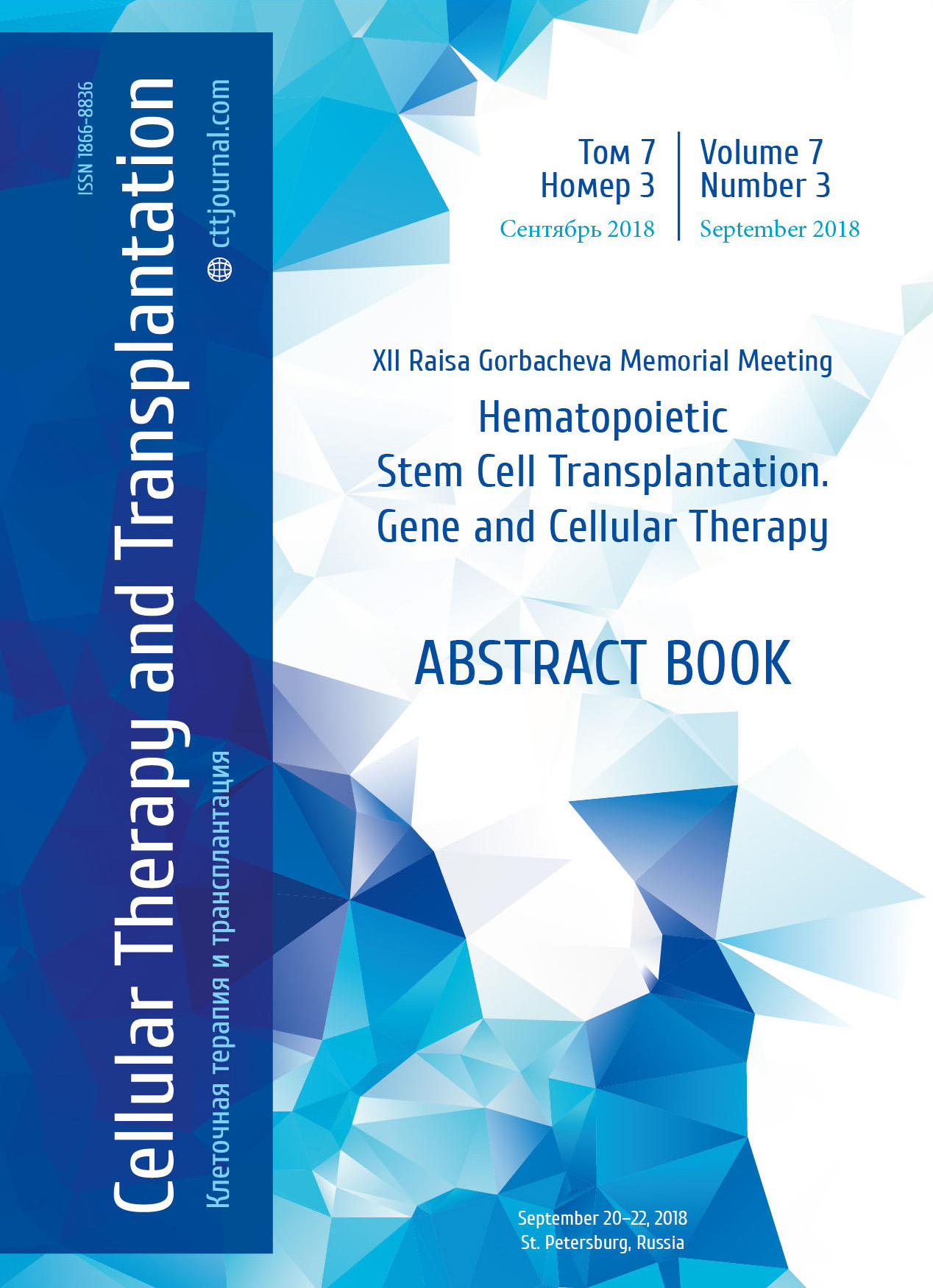Chemotherapy, infusion therapy: the role of a nurse
Summary
Aim
The aim of this study is to explore the role of a nurse and the specifics of nursing care during chemotherapy, infusion therapy, hematopoietic stem cell transplantation (HSCT) and study the process of a donor preparation for the donation of a peripheral blood mononuclear cell (PMBC) concentrate.
Methods of investigation
The study is based on the HSCT protocol in acute myeloid leukemia (AML). The standard procedures included: 1. Chemotherapy (conditioning). 2. Infusion therapy. 3. Preparation of a donor. 4. HSCT.
1. Chemotherapy stage
This conditioning treatment protocol includes the following chemotherapy agents: Fludarabine, Treosulfan, Thiotepa, Actemra, Orencia. When using drugs within the conditioning treatment, the role of a nurse is to ensure the prescribed injection regimen (drug dosage and dilution, speed of injection, first aid, if necessary). A nurse should be aware of any possible complications, apply recommendations for the prevention of complications, educate patient’s parents on these recommendations. Prevention of potential complications: a) Skin: use of topical corticosteroids, moisturizing and softening creams for skin care. Daily application of cleansing lotion using disposable wash gloves. b) Mucous membranes. Use of oral antiseptic solution (gargling and irrigation); c) Gastrointestinal system: prevention of nausea and vomiting (dietary recommendations, use of antiemetics). d) Urogenital system: application of an antiseptic solution to the external genitalia for purposes of disinfection. e) Nervous system: distribution of prescribed medications which are aimed for management of anxiety, peripheral neuropathy symptoms (muscle weakness, muscle tone impairment, tremor, muscle spasm).
2. Infusion therapy
In order to provide effective and safe infusion therapy (IT) delivery it is necessary to have a detailed information on the following aspects: duration of intravenous infusions, guidelines of infusions, venous access site care and equipment maintenance. Before starting the infusion therapy, a nurse must perform an assessment of a patient (fluid balance measurement, patient’s vital signs monitoring); educate and inform a patient and her/his parents about the planned treatment.
3. Preparation of a donor
An important stage in HSCT is to prepare a donor for stem cell donation by means of cytapheresis. To obtain a peripheral blood mononuclear cell concentrate enriched in hematopoietic stem cells, a preliminary G-CSF-induced leukocyte mobilization is required. G-CSF increases WBC count and stimulates stem cell release from the bone marrow into the peripheral blood. A nurse performs subcutaneous injections of G-CSF for 5 days and registers possible uncommon side effects. At doctor’s instruction a nurse performs an injection of anesthesia, collects blood for testing and places a catheter for the infusion therapy.
4. Hematopoietic stem cell transplantation
During the treatment on the AML protocol, TCR-Alpha/Beta and CD19 depleted haploidentical stem cell transplantation is performed. The advantages of the method: TCR aplha/beta cells are removed from the graft to perform a GVHD prophylaxis. The remaining small percentage of gamma/delta T-cells induces a faster immune system recovery and, as a consequence, leads to more rapid immune reconstitution. During the procedure of transplantation, a nurse is responsible for: monitoring of patient’s vital signs; ensuring the availability of drugs for side effect management; using filters to prevent transfusion reactions and alloimmunization during transplantation. A nurse should be aware of potential complications and provide an appropriate assistance.
Conclusion
Nursing staff plays an important role in implementation of all standard procedures of treatment protocols at our Center. A nurse must guide the patient through the department and inform her/him of the treatment plan prescribed by the treating physician. She should be able to answer the patient’s questions relating to the preparation for the chemotherapy and HSCT, explain the cause of the chemotherapy-induced complications and inform the patient on how to prevent or reduce them. Side effects induced by anti-cancer drugs and HSCT creates certain problems for a patient and medical staff involved in care, management of which require the assistance of nursing staff and personalized approach to each patient.
Keywords
Chemotherapy, conditioning, infusion therapy, role of nurse, donor, hematopoietic stem cell transplantation.


